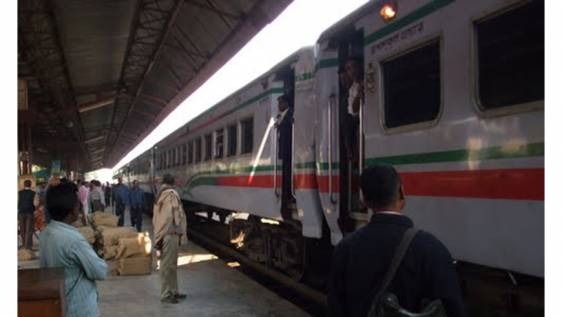Tk519 crore project to boost revenues on both sides, open up trade
Bangladesh and India plan to establish a new rail route that will directly connect four northeastern Indian states, with connections through Bangladesh’s Kulaura station where train services have been suspended since 2002.
The two countries have already agreed to a rail connection between Akhaura in Brahmanbaria district and Agartala, the capital of India’s Tripura state.
The Bangladesh Railway authorities have sent a proposal to the Executive Committee of the National Economic Council (Ecnec) for approval of a project to restore and construct a 39-km rail line to connect with India’s Assam, Tripura, Meghalaya and Mizoram states.
The proposed route will link Kulaura in Moulvibazar district with Mahisasan station in Assam’s Karimganj district.
“We have already sent the proposal to Ecnec for its approval. Restoration of the Kulaura-Mahisasan section will enable us to travel to Assam, Tripura, Meghalaya and Mizoram,” Railway Minister Mazibul Haque told the Dhaka Tribune.
The governments of both countries have given the go-ahead for implementation of the Tk519 crore project from the $1bn Indian loan given to Bangladesh.
The two sides signed a memorandum of understanding in February last year for constructing a 10.14km railway line between Akhaura and Agartala at a cost of Tk325 crore, which will be given as grant by India.
The Kulaura-Mahisasan link will ultimately join the Trans Asian Railway network, which will enter Bangladesh from India, and then pass through Myanmar via the northeastern states. Mahisasan is connected to the rest of the Indian railway network.
Businessmen and officials hailed the government decision to initiate a new railway route, terming it as a move forward that would open a new avenue for earning revenue from transit and transshipment, while boosting trans-boundary trade and people-to-people contact.
“This will be a very important project for the country as it will meet the Trans Asian Railway network and contribute to increasing regional trade,” said Md Manjurul Islam, chief planning officer of Bangladesh Railway.
Abdul Matlub Ahmad, president of Bangladesh-India Chamber of Commerce and Industry, told the Dhaka Tribune that Bangladesh earned around $300 million from exports to the northeastern states.
“This forward looking project will create investment opportunities and open up a new window of foreign currency income from transit and transshipment activities.
If implemented, we can earn up to 500 million dollars every year from transit and transshipment charges,” Matlub Ahmad said.
The railway minister added that sub-regional connectivity would definitely improve bilateral relations between Bangladesh and India.
Bangladesh Railway, meanwhile, also plans to set up a container depot on the western side of the Jamuna multipurpose bridge, which would not allow Indian freight trains to cross over due to load restrictions.
Indian goods would then be unloaded there for transshipment to the northeastern states by Bangladesh Railway.
Bangladesh Railway and Indian Railways stopped operation of cross-border goods trains in 1996 when the Indian authorities converted its tracks to wider broad gauge, while the tracks on the Bangladesh side remained narrow metre gauge.
Railway records show that freight trains between Kulaura and Mahisasan operated until October 1996 before the track conversion.
Bangladesh Railway, however, continued to operate passenger trains to the Indian side until July 7, 2002. The then BNP-led government suspended the service, citing shortage of human resources.
The route’s closure resulted in the theft of railway equipment and illegal occupation of railway property.
Source: Dhaka Tribune










